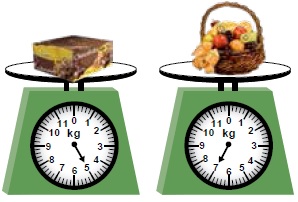Class : Class 7
ok but thank you for the explanation (not being sarcastic). but it is just way to high level for class 6
Class : Class 6
Actually, this question has a partly wrong answer, although the best answer would be (D). Here's why. The amount of statements in an equation must be greater than or equal to the amount of unknowns, or else there will be infinitely many solutions. Since there are 5 variables in the given singular statement, there will be no way to find a proper solution for every unknown. However, it could be reasoned by the numbers associating these unknowns that 3/P is actually 35.4067/10, 5Q = 35.4067/100, and so on for every quantity. After solving for a so-called solution, we can find the 'correct' answer which is (D).
Post Your Answer
Read the given statements carefully and
state 'T' for true and 'F' for false.
(i) Mean, Median and Mode can never be same for any data.
(ii) Median of the data can be less than the mean of data.
(iii) Mean of the observations is the sum of all the observations.
| (i) | (ii) | (iii) | |
|---|---|---|---|
| A | T | T | T |
| B | T | F | T |
| C | T | T | F |
| D | F | T | F |
Post Your Answer
Post Your Answer
Post Your Answer
If (–2, 1), (a, 0), (4, b) and (1, 2) are the vertices of a parallelogram, then
(i) Find a
(ii) Find b
(iii) Area of the parallelogram.
| (i) | (ii) | (iii) | |
| A | 1 | –1 | 10 sq. units |
| B | 1 | –2 | 6 sq. units |
| C | 1 | 1 | 6 sq. units |
| D | –1 | –1 | 6 sq. units |
C) 1, 1, 6



 then the value of 2P + 4Q + 5R + 7S + 3T is
then the value of 2P + 4Q + 5R + 7S + 3T is





